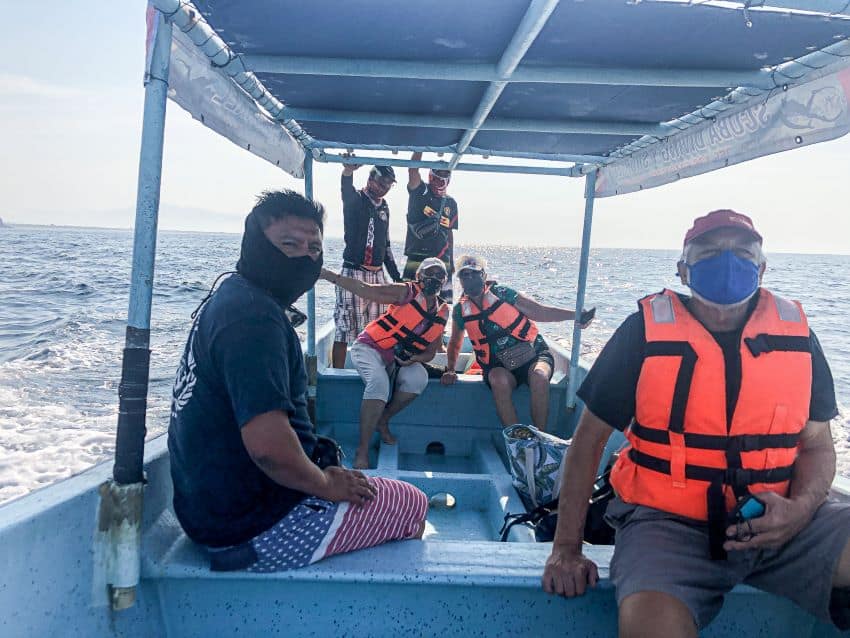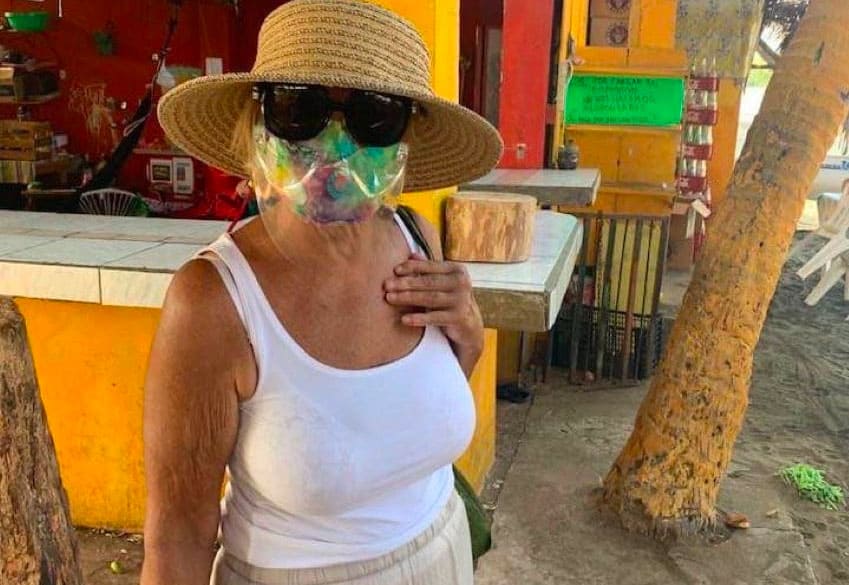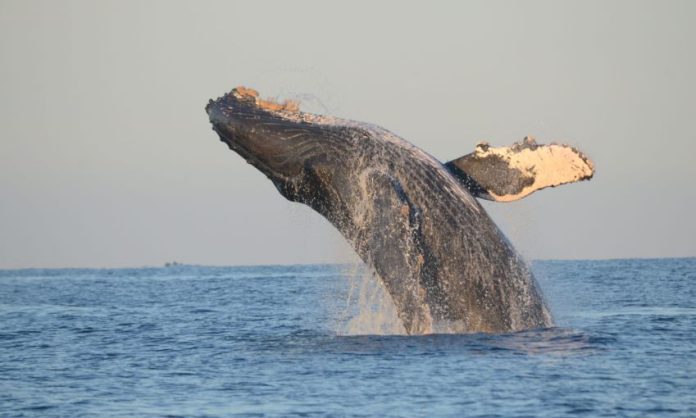Although I have lived many years in Zihuatanejo, I have never before taken the opportunity to book a whale tour in Barra de Potosí, a small community not far from there and basically in my backyard. With the Whales of Guerrero concert held recently in March, I decided it was time to take advantage of the proximity.
Whales of Guerrero is a charitable organization that facilitates community-driven conservation in the fishing village of Barra de Potosí and throughout Guerrero. Among many other initiatives, the organization trains locals to take tourists on safe whale and dolphin watching excursions. Guides trained by the charity are certified by Mexico’s Environment Ministry and gain access to a whale-spotting network, allowing them to work together to find whales and to coordinate to give the whales space and avoid causing them stress.
Some conservationists and marine mammal researchers are concerned that whale and dolphin watching drives the animals away from preferred areas and forces them to move away from their feeding zones in order to avoid boats.
Together with three other friends, we took the trek to the village of Barra de Potosí. We met our guides Raúl, Jorge and Jesús, who were already waiting for us at Restaurante Gaviotas, one of many restaurants that dotted the beach. As we donned our lifejackets and had a brief safety meeting, I was happy to see that our panga (boat), which was immaculately clean, had a canopy for shade and that the guides all wore masks, as did we.
The waters can be choppy in that area, and the swells can look daunting. I sat in the boat’s prow to take photos, which was thrilling as we maneuvered through the waves. However, our captains were proficient at steering, and it didn’t take me long to relax.

I knew from reading their website that the guides belong to an association and are continually upgrading their skills and knowledge of whales and natural habitat funded through the Whales of Guerrero organization.
The boat sliced through the water past the surf to the open sea relatively quickly. Although I was expecting that it would be some time before we would see anything, it was probably no more than 15 minutes before we got our first glimpse.
We raced towards the “blow,” and Raúl explained that you could see the whale’s “footprint” on top of the water after it breaches the surface. As we rode, he imparted more of his knowledge to our group. For instance, the song a whale sings depends on its purpose. Since we were now entering the area where they breed, he told us, the male whales sing beautifully to entice a mate. Rather romantic, I thought. Whales telling rivals to stay away sound much different.
Like people and their fingerprints, no two whales have the same design on their flukes. In this way, they are identified and tracked by conservationists when they breach. If you manage to capture a fantastic shot, as we did, you can send it to Whales in Mexico via their website and they will know if it is a whale they already are familiar with or a newcomer that you have discovered. Today, their catalog has documented more than 320 individual whales.
A few miles out from our last sighting, our captains lowered the speed and we bobbed on the waves waiting for a closer look. Fifteen minutes passed before they breached again, a truly wonderous sight to behold as we counted three whales in the pod. When the whales emerged the third time just eight minutes later, our guides told us it meant that they were not bothered by us or the other boat a little bit off in the distance.
I was impressed that the boats kept such a space between them because I recall that in Quebec, on my only other whale watching tour years ago, that was not the case. There, we found that the waters were quite congested, with several boats packed with people hoping to get a closer look and probably the reason we could only get a glimpse at a distance. But here in Mexico, it was an entirely different experience.

After nearly two hours and numerous sightings, we headed to shore but not before stopping to watch a mother and her calf on the way back.
It was clear our seemingly determined captains wanted to make sure we got our money’s worth. And in my opinion, it was well worth the 800-pesos price, and an experience I will be sure to repeat.
Whale watching prices can range from 2,400 to 9,000 pesos, depending on the captain and the boat. Many of the crews are bilingual. Working with a trained guide increases your chances of finding whales; plus you’ll have the security of knowing that the animals are not stressed by your presence.
You can book an excursion on the organization’s website. Whale watching season has ended until next December, but in the meantime, for a US $100 donation, you can adopt a whale for the next two years, and then track it. For more money, you can even get it named after you.
The writer divides her time between Canada and Zihuatanejo.
